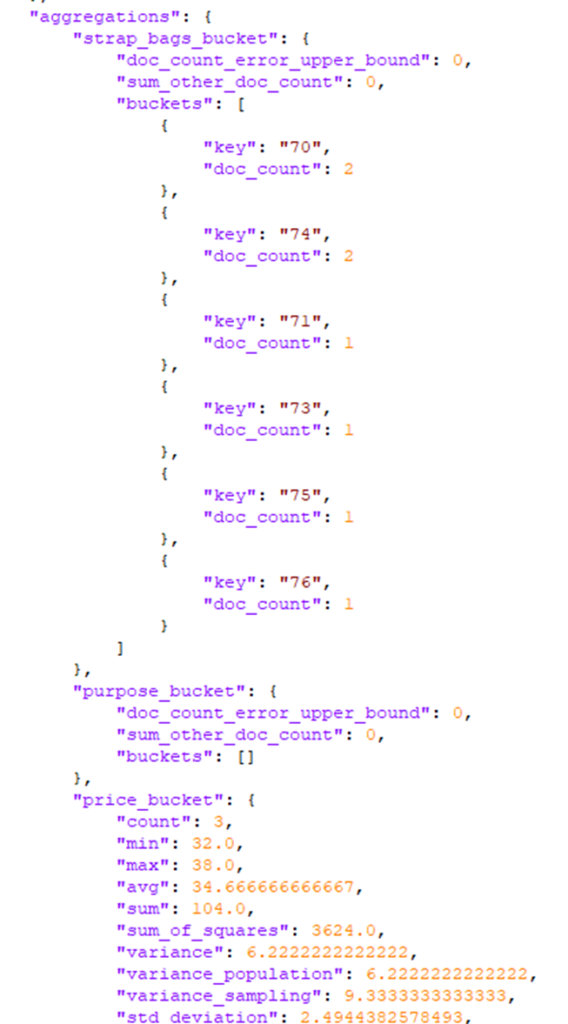Magento 2 - How data is fetched from Elasticserach
Related Articles
- How to Enable 'eq' Filter GraphQL Search for an Custom Attribute of Type Text in Magento 2
- Magento 2 - Useful Elasticsearch Commands
- Magento 2 - Elastic Search Concepts for a Magento Developer
- How Product Data is Pushed to Elasticsearch from Magento
- Elastic Search for Magento Developer
Overview
Once we have the product data pushed to Elasticsearch we can now use ES API's to fetch data.
The data from ES helps to
- Identify the products ids that are relevant for the specific search query.
- Filter Navigation / Aggregation
Once we have the products ids, The relevant product data such as pricing, inventory, product attributes are fetched from the mysql directly.
A search request to elastic search contains 3 parts.
- The Search String
- Sorting
- Aggregation (Filter Navigation)
These requests are built based on configuration in search_request.xml file. By default, Magento uses the following query types:
- quick_search_container – Quick Search
- advanced_search_container – Advanced Search
- catalog_view_container – Category page with layered navigation
- graphql_product_search_with_aggregation – Used by GraphQL API when you pass aggregation query
- graphql_product_search – Used by GraphQL API
Code Reference :
- vendor/magento/module-catalog-graph-ql/etc/search_request.xml
The Search Query
There are three types are search query defined in search_request.xml
- boolQuery
- matchQuery
- filteredQuery
With the bool query, you can combine multiple queries into one request and further specify boolean clauses to narrow down your search results.
There are four clauses to choose from:
- Must
- One or more queries can be specified here. A document MUST match all of these queries to be considered as a hit.
- must_not
- A document must NOT match any of the queries specified here. It it does, it is excluded from the search results.
- Should
- A document does not have to match any queries specified here. However, it if it does match, this document is given a higher score.
- Filter
- These filters(queries) place documents in either yes or no category. Ones that fall into the yes category are included in the hits.
You can build combinations of one or more of these clauses. Each clause can contain one or multiple queries that specify the criteria of each clause.
These clauses are optional and can be mixed and matched to cater to your use case. The order in which they appear does not matter either!
- These filters(queries) place documents in either yes or no category. Ones that fall into the yes category are included in the hits.
Syntax:
GET name_of_index/_search
{
"query": {
"bool": {
"must": [
Filter by attributes, Category Ids, Visibility
],
"should": [
{ The Search String }
],
}
}
}
How Search Query is Generated
The search queries are defined in the below 4 files, Based on the type of search request the respective container is selected.
- vendor/magento/module-elasticsearch-catalog-permissions/etc/search_request.xml
- vendor/magento/module-elasticsearch-catalog-permissions-graph-ql/etc/search_request.xml
- vendor/magento/module-catalog-graph-ql/etc/search_request.xml
- vendor/magento/module-catalog-search/etc/search_request.xml
When search request is processed these xml files are processed and the relevant search query is generated and stored in the cache. The process of generating the search aggregation query is explained below
| File Reference | Comments |
| \Magento\Framework\Config\Data::initData | XML file content and parsed and merged |
| \Magento\Framework\Search\Request\Config\Converter::convert | Search Query is formed  |
| \Magento\CatalogSearch\Model\Search\Request\SearchModifier::modify | At this point we will have the category and price bucket generated but filterable attribute bucket are not generated yet |
| \Magento\CatalogSearch\Model\Search\RequestGenerator::generate \Magento\CatalogSearch\Model\Search\RequestGenerator::generateRequest | At this point all the filterable bucket attributes are generated. $request['aggregations'][$bucketName] = $generator->getAggregationData($attribute, $bucketName); |
The ouput of these parsed xml files is stored in the $data array

| Container | Sample Data |
| Quick Search Container |  |
| Catalog View Container |  |
| GraphQl Product Search With Aggregation |  |
| GraphQl Product Search |  |
Lets see some actual elastic search requests that gets triggered in real time.
Category Page Query
To List all the Products from a specific Category
| Frontend URL | Elastic Search Request |
| Category Page http://commerce.development/gear/bags.html | URL: http://localhost:9200/commerce_product_1/document/_search?track_total_hits=true Body:  |
| Category Page with Filter Selected http://commerce.development/gear/bags.html?material=47 | Api Request: http://localhost:9200/commerce_product_1/document/_search?track_total_hits=true Request Body:  |
Search Page Query
If you are searching for a string “pack” the below query is issues to elastic search
Frontend URL : http://commerce.development/catalogsearch/result/?q=pack

In Short difference between PLP and Search Page query is the query clause
- PLP -> must
- Search Page -> must & should
Sorting
By default magneto supports position, product name and price sorting. Additional attributes can be added for sorting. In that case the respective mapping will get updated note that a full reindexing is required in that case.
Below are the few sort query examples.
| Sort By Position |  |
| Sort By Name |  |
The data for the filter navigation is generated using the aggregation buckets in the search query
| Search Query | Frontend Display |
 |  |
There are primarily three types of aggregation buckets
- Category Bucket
- Price Bucket
- Filterable Product Attributes Bucket
The Response from the aggregation bucket from the elastic search will be like the below


These data from the response is parsed and displayed in the Frontend Filtered Navigation


